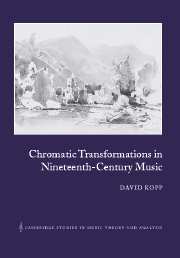Book contents
- Frontmatter
- Contents
- Foreword by Ian Bent
- Acknowledgements
- 1 Common-tone tonality
- 2 Three examples of functional chromatic mediant relations in Schubert
- 3 Key harmonic systems and notions of third relations from Rameau to Hauptmann
- 4 Hugo Riemann
- 5 Twentieth-century theory and chromatic third relations
- 6 Riemann's legacy and transformation theories
- 7 A chromatic transformation system
- 8 Chromatic mediant relations in musical contexts
- 9 Five analyses
- Bibliography
- Index
- Compositions cited
3 - Key harmonic systems and notions of third relations from Rameau to Hauptmann
Published online by Cambridge University Press: 22 September 2009
- Frontmatter
- Contents
- Foreword by Ian Bent
- Acknowledgements
- 1 Common-tone tonality
- 2 Three examples of functional chromatic mediant relations in Schubert
- 3 Key harmonic systems and notions of third relations from Rameau to Hauptmann
- 4 Hugo Riemann
- 5 Twentieth-century theory and chromatic third relations
- 6 Riemann's legacy and transformation theories
- 7 A chromatic transformation system
- 8 Chromatic mediant relations in musical contexts
- 9 Five analyses
- Bibliography
- Index
- Compositions cited
Summary
MUSICAL INTUITION VS. THEORETICAL CONSISTENCY
The purpose of this chapter is not to present a history of ideas of chromatic harmony throughout the nineteenth century, which can be found elsewhere. The focus will be on a few select harmonic theories, most of which contain arguments for the presence of direct chromatic third relations. These arguments generally originated from a belief in chromatic mediant relations' coherence. Once they were acknowledged as meaningful progressions, theorists had to account for them within the structures of existing theories. Ultimately, they could be formalized only to the extent that the structure of theories could express them. Thus the mechanics of theories, not the ears and hearts of theorists, determined the extent to which chromatic mediants were successfully formulated. Belief did matter to some degree: a theorist who felt that chromatic mediants destroy the integrity of the key would not be inclined to accommodate them. But even those who did recognize their legitimacy were not always able to translate this into full theoretical expression. As the nineteenth century progressed, chromatic mediants were ever more present in music. At the same time, theories of tonal relations became ever more systematic. Ironically, as the role of chromatic third relations in music became more normative, the ability of theory to bend to receive them often became more compromised.
RAMEAU AND THIRD RELATIONS
Rameau's theories well predate the nineteenth century. But some aspects are worth mentioning here as an early expression of chromatic mediants’ place in the tonal system.
- Type
- Chapter
- Information
- Chromatic Transformations in Nineteenth-Century Music , pp. 33 - 60Publisher: Cambridge University PressPrint publication year: 2002

